Madrid: A return to Rome’s rival reveals a city still dancing
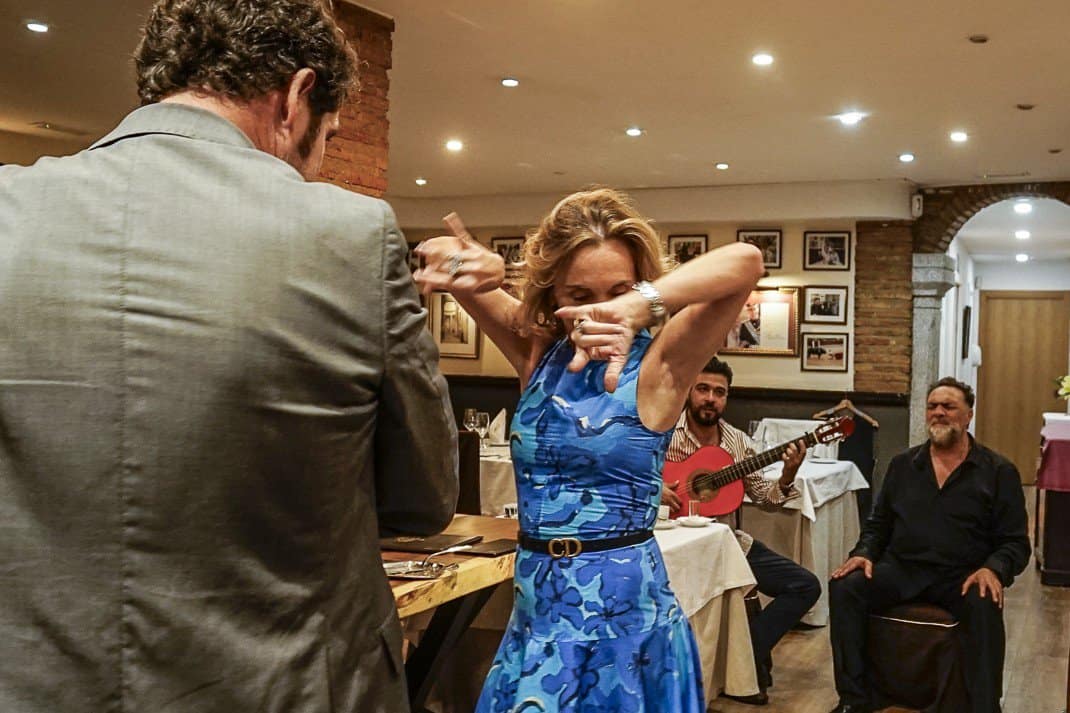
MADRID – Being a Rome resident for nearly 10 years and still possessing competitiveness from my sportswriting days, I seek out rivals to my adopted city. I compared Rome to Paris. (Rome gets the edge in food and wine; Paris wins in cleanliness and nightlife.)
Rome vs. Paris is a common theme. But maybe Rome’s closest rival should be Madrid. Both are major Southern European capitals. Both have the Mediterranean lifestyle that captivates the world in terms of diet and mentality. Both have style and passion and sensuality.
I’ve equated Rome to “… a sexy showgirl. Her revealing outfit and engaging smile promise a week you’ll never forget.” After spending a long weekend in Madrid this month, I’d call Madrid the energetic flamenco dancer. Maybe she’s not as beautiful as Rome but is a little cleaner. Her life is less chaotic. She’ll take you home and you don’t have to wonder where your wallet is the next morning.

Madrid … why?
Two weeks ago Marina and I came to Madrid for a long weekend. I attended my first meeting of the Travelers’ Century Club’s Mediterranean Chapter. Last year I joined this club for people who’ve been to at least 100 countries and territories. It has been a great clearinghouse of information from travelers who’ve been to a lot more places than I have, including places I’ve never heard of. (Where the hell is Skadu?)
I wondered if Madrid would be too mainstream for this group. It got 6 million tourists last year. But the Spanish capital is always worth visiting, especially now. It has enjoyed a post-Covid rejuvenation with an improved public transportation system and cleaner air despite a backdrop of a national government that finds itself rudderless.
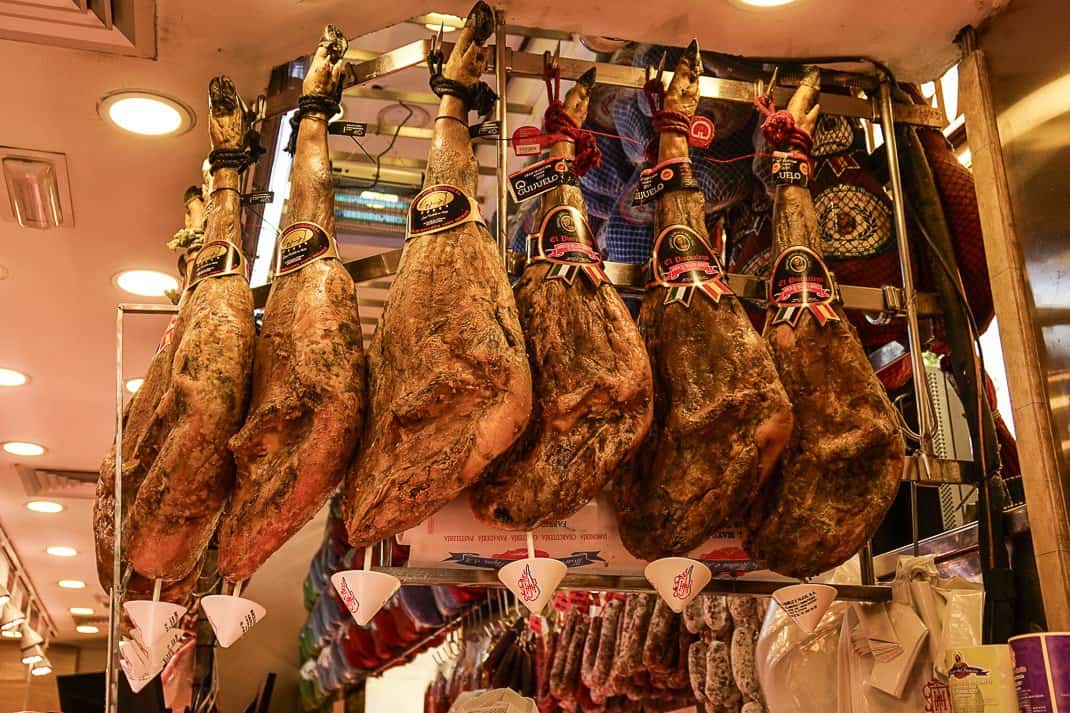
Last year The Economist ranked Madrid third in the world in Tourism Policy and Attractiveness and CNN.com ranked it fourth in sustainability.
My visit in ’78
Once again retracing steps from my trip around the world, I came to Madrid for the first time since 1978. I don’t remember much of my three days here then. It was three years after dictator Francisco Franco died, and the Spanish, particularly the Madrilenos who never liked the guy, were still partying.
I do remember sitting in a rough and tumble restaurant off Plaza Mayor and getting hammered with a fellow recent college grad who was a Spanish major and two Iranian nuclear physicists who liked to drink. We couldn’t have been more politically incorrect if we cheered for a matador at a bullfight – which I also attended. I recall it being brutal and the 25,000-seat Plaza de Toros had only a few thousand spectators, most of whom lustily booed the hapless matador who let himself get gored.

I remember touring the Prado and instantly becoming a fan of El Greco. Prado was my favorite museum in the world until I moved to Rome.
So I arrived with almost a clean slate. Turns out, I’d missed a lot in that drunken fog nearly a half century ago. Our first full day started way too slowly. We live in Rome. We can’t start our day without a cappuccino. Our hotel Madrid Nacional was in the heart of the busy museum district and we couldn’t find a single cafe open before 9 a.m. on a Saturday.
Starbucks doesn’t count. Yet that was the only place open. For me, entering Starbucks has always been more painful than entering a bullring. Marina’s cappuccino served in a paper bucket they also use to put out hotel fires had all the rich creaminess of paddy water.
It was gross. Starbucks is gross.
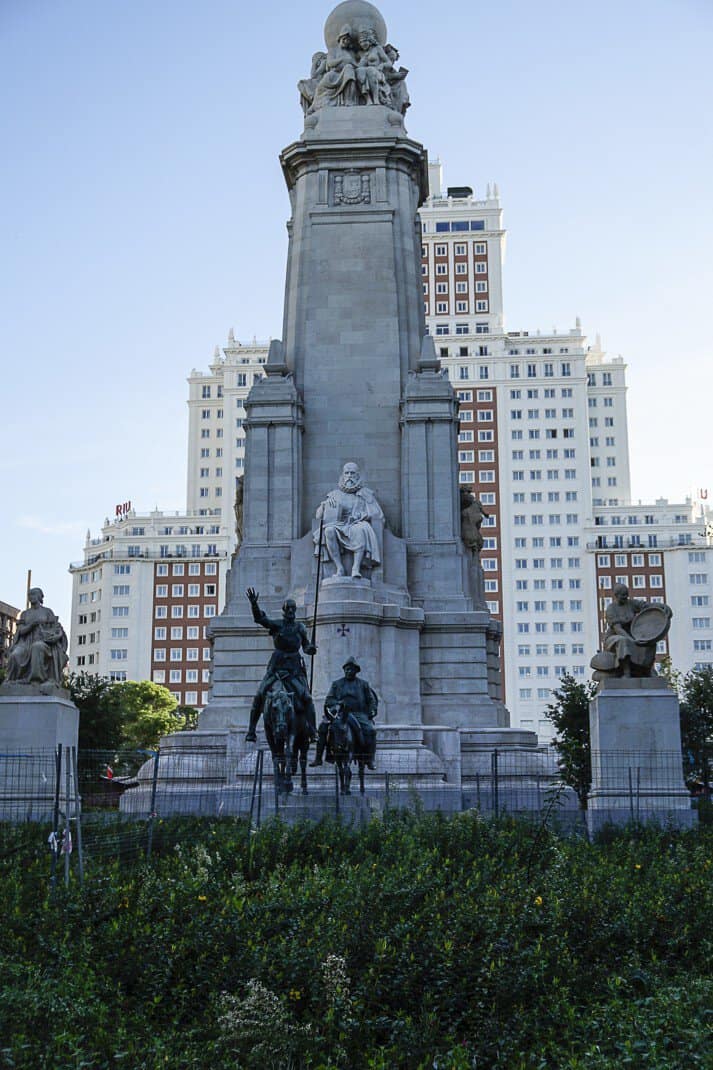
Three things stood out for me in Madrid: The cleanliness, the parks and the public transportation. I vaguely recall that the air pollution in ‘78 wasn’t much better than Rome, which at the time was a giant ashtray. In 2018, then-mayor Manuela Carmena’s Madrid Central program made central Madrid mostly limited to residential cars. In one year, pollution fell 20 percent and even though her successor weakened the law, the sky we saw was a brilliant blue on sunny days in the low 80s.
Parks and palaces
The streets, piazzas and parks were void of trash that Saturday morning, a remarkable achievement in a city that lives for the night. We walked from our hotel two kilometers to the Royal Palace and we could’ve eaten our chocolate con churros (Spain’s fried dough tubes dipped in chocolate sauce) off the sidewalks.
The lone exception was Plaza de Espana. The giant square with the statue of Miguel de Cervantes, Spain’s most famous writer (Don Quixote), had garbage everywhere. It overflowed from bins and was strewn around the many park benches. It reminded us of Rome. Plaza de Espana was the site of a concert the night before. I’ll give it a pass and assume they cleaned it up by noon.
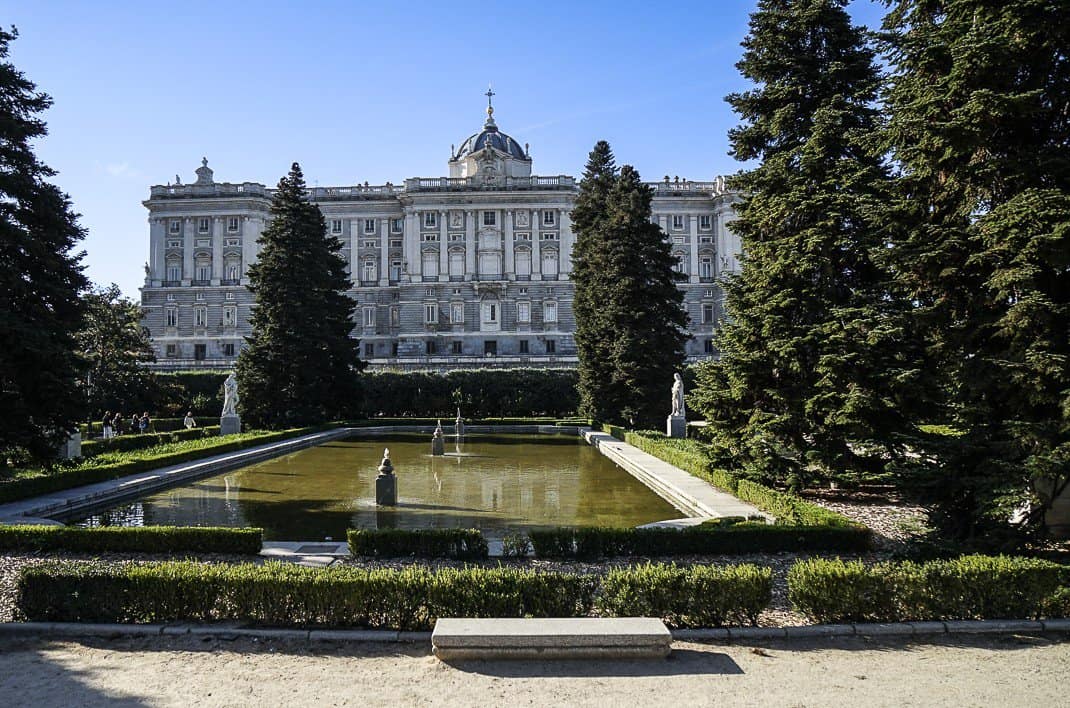
Too bad. In 2021 the city spruced up the plaza with 1,000 trees and built pretty walkways and fountains. They all lead to the Palacio Real (Royal Palace) 400 meters away. This foreboding palace, completed in 1735, was built by Felipe V, the first Bourbon king who built it after a Muslim-era castle burned down the year before. He wanted a palace that topped anything ever constructed. He succeeded. It covers 1.45 million square feet (135,000 meters), has 3,418 rooms and it remains the largest royal palace in Europe.
It is the home of Felipe VI, Spain’s Georgetown University-educated king and Olympic sailor who has continued Madrid’s long-held iron fist against Catalan independence. I can imagine seeing him stroll through his Jardines de Sabatini, a beautiful fountain-laced maze of trimmed hedges built in the 1930s to replace the royal stables.
Like Romans, the Madrilenos live outdoors. The weather helps. The mentality helps more. We walked across the Rio Manzanares to Casa de Campo, a 17-square-kilometer collage of jogging paths, walkways, trees and fountains. Known as “The Lungs of Madrid,” Casa de Campo attracts half a million people every weekend, all celebrating the short-lived Republican government who took the park from the royal family in the 1930s and opened it to the public.
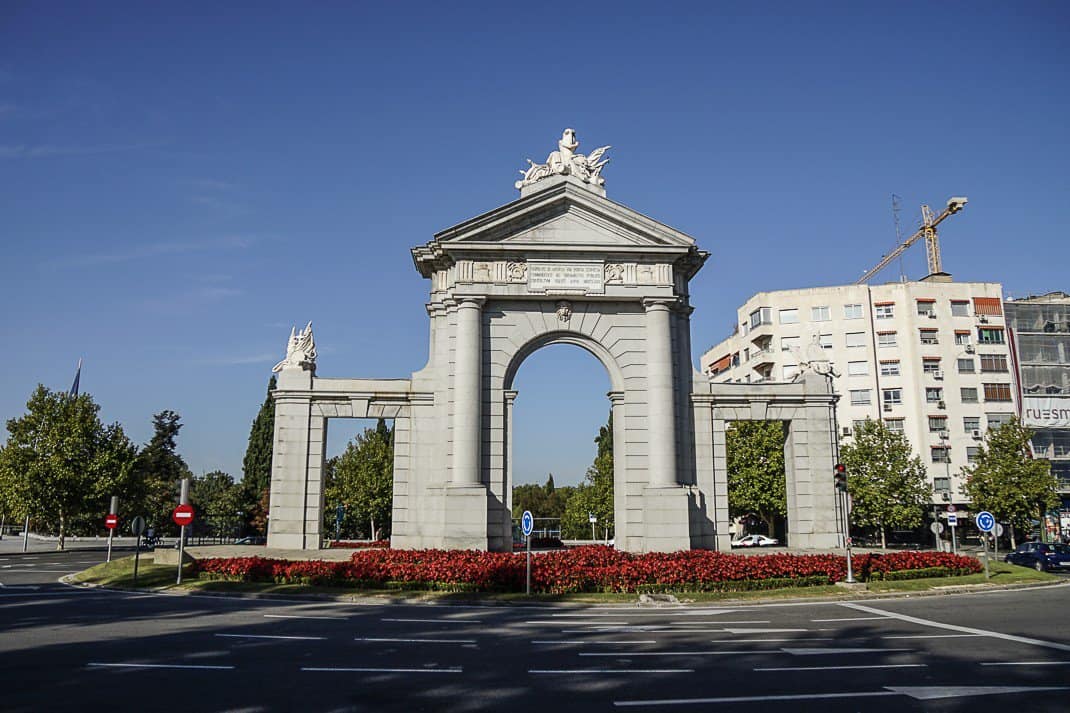
We walked through the towering gate to enter and were engulfed in a human wave of joggers, cyclists, walkers, strollers, picnickers and lovers. Birds chirped in the olive trees lining the pedestrian paths. Spanish music blared from a picnic table where tattooed youths slowly gyrated in a dance I was way too old to understand.
The Madrilenos weren’t lost in unhinged euphoria as in ‘78. But their celebration of life is among the best I’ve seen in the world. I can see why they say, “If you’re in Madrid, you’re from Madrid.”
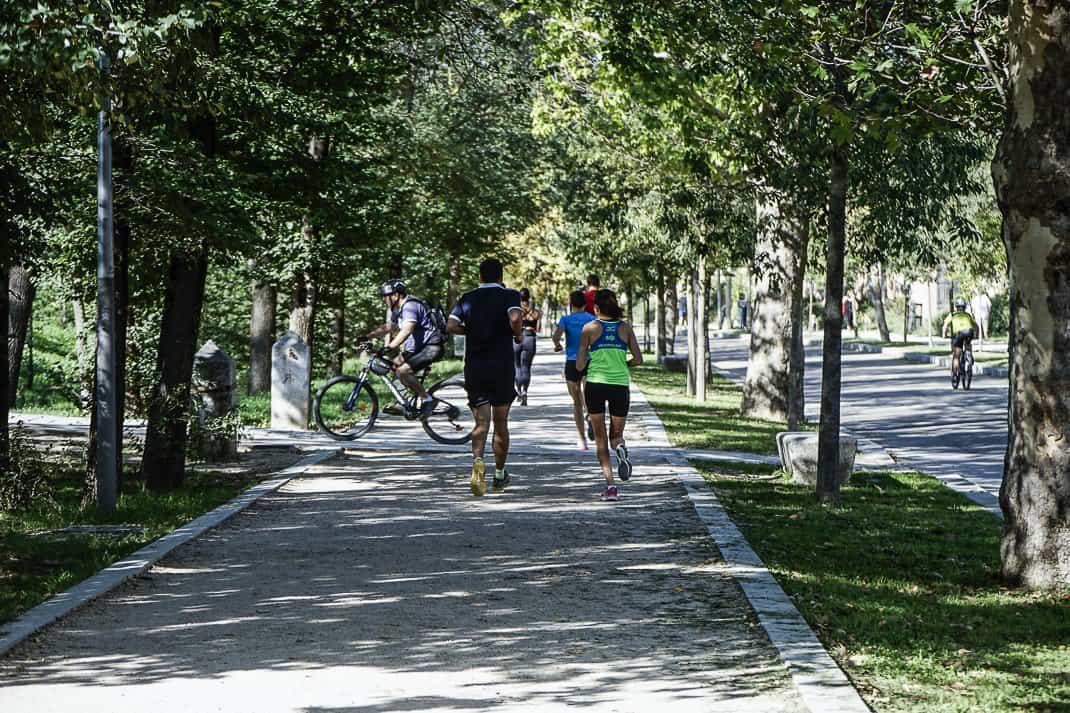
One local has as good a perspective as anyone in the city. Jose Manuel Jimenez is a fellow Travelers’ Century Club member who organized our Madrid meeting. He’s been to 107 countries. He has shopped and compared.
I talked to him at our meeting about Madrid and he credits the city’s entrepreneurship as a big reason why it’s thriving.
“It’s a very liberal city. There are many businesses relocating in Madrid,” he said. “The communication is really good. It’s a city that’s really growing. Prices for flats and houses are rising really a lot. I’ve always said that in 10 or 15 years Madrid can be like Paris or London in terms of wealth. I was born here. I’m a traveler.
“I like to leave Madrid but I’m always extremely happy to return to my city.”
He said the major improvements came after 1986 when Spain joined the European Union. Then after Covid, the city revamped its public transportation. As a willing convert to public transport, I can vouch that it’s fantastic. Besides the Metro subway that covers 301 stations and the trains arrive every three minutes, the buses all have electric signs inside indicating what stations you’re approaching and when you’ll arrive.
A trip is only €1.50. It’s the same in Rome but unlike Rome, Madrid’s buses don’t inexplicably burst into flames.
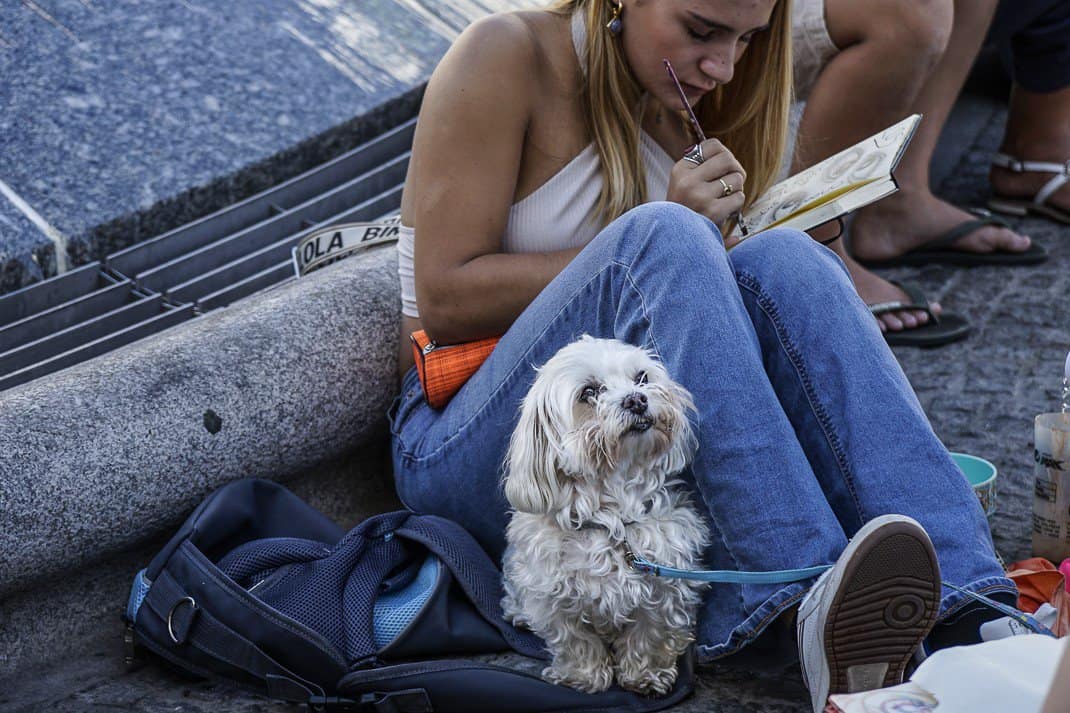
He credits the Popular Party.
“The government in Madrid hasn’t changed in 25 years,” he said. “It’s the right party. Not because they are right but they are the right-side party. They’re doing things extremely well. They’re taking care of people, taking care of transport, taking care of also to improve the neighborhoods around Madrid. There are a lot of advantages.”
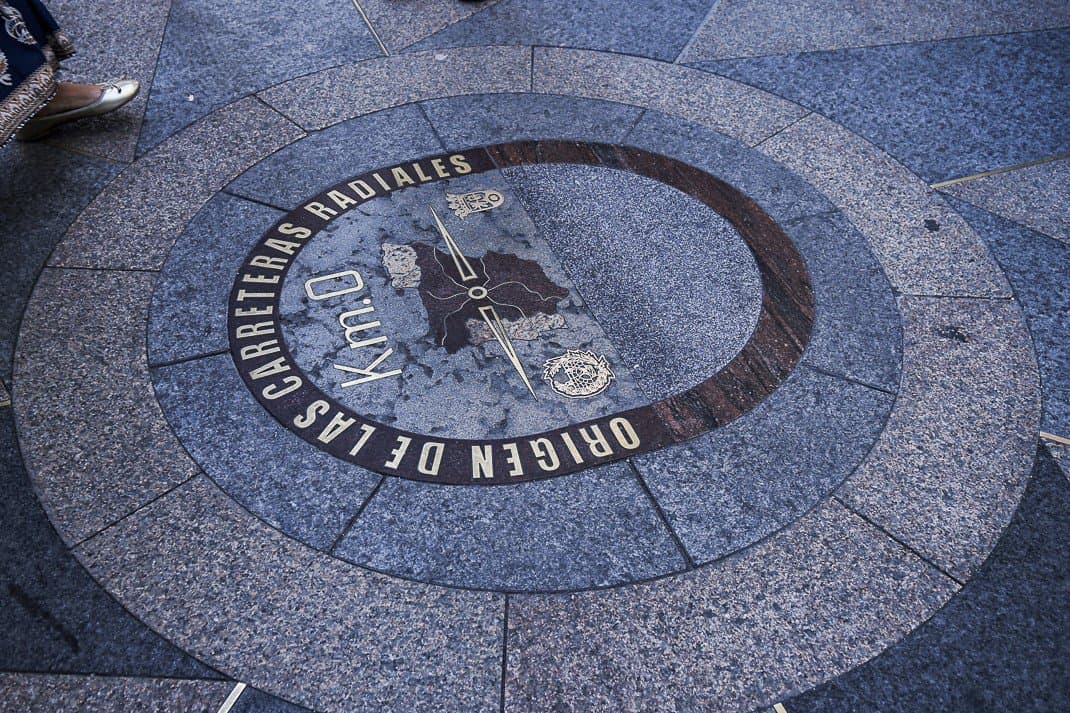
However, this is all happening under a national umbrella that is in political limbo. In July’s elections, incumbent prime minister Pedro Sanchez of the Socialist Party failed to get enough majority votes to stay in office. It has fragmented Parliament and the national leadership is up for grabs among Spain’s 11 political parties. New elections in 2024 are predicted.
But then, Franco assassinated political enemies, sent others to concentration camps and forced gays into psychiatric hospitals. I think Madrid can survive the center left.
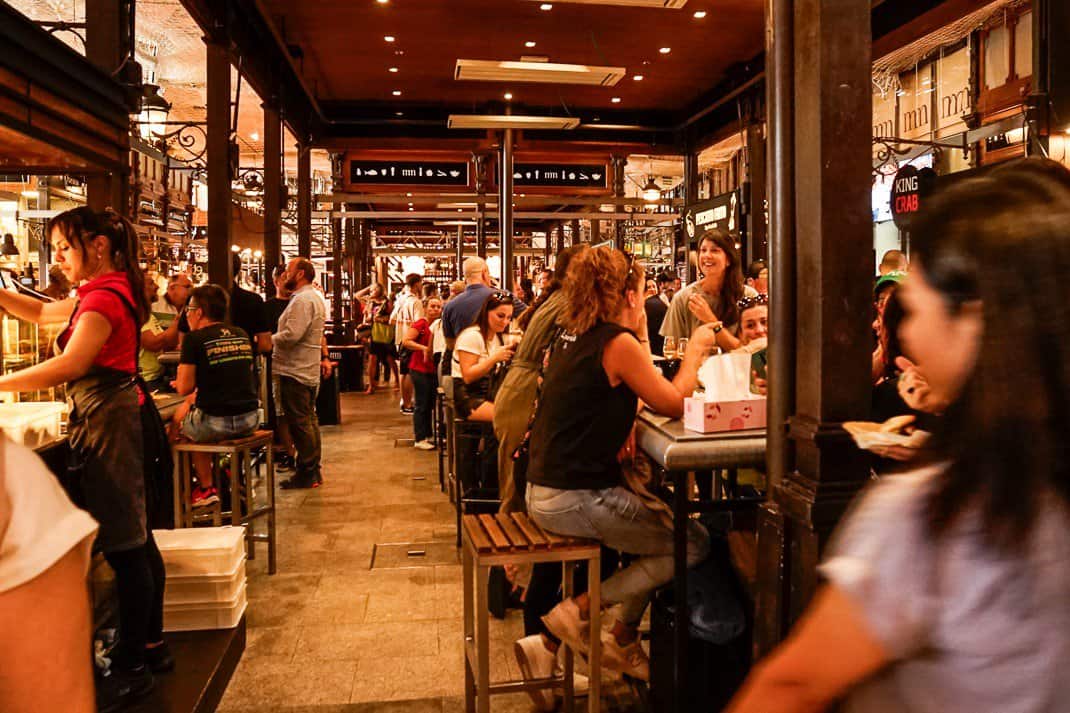
Mercado de San Miguel
What every political party in Spain can agree upon is tapas. These are the trademark Spanish hors d’oeuvres that make eating in Spain as much an adventure as it is a dining experience. You’ve heard of bar hopping? In Spain it’s tapas bar hopping. In every Spanish city you’ll find streets dedicated to a list of small, tasty plates of local delicacies. Try one here, go next door and try one there. Go across the street and get something you’ve never heard of before.
Madrid has the Disneyland of tapas bars. Mercado de San Miguel opened in 1916 as a public food market. Local investors bought it in 2003 and reopened it in 2009 specializing in tapas. More than 30 stalls serve goodies made from everything from Iberian ham to Castilian cheese to Mediterranean shellfish.
We walked in our first night, a Friday, and it felt like free day at Disneyland. It was packed. We heard very little Spanish. American English. British English. Irish English. German. A smattering of Scandinavian tongues. I caught some Russian by a bar.
San Miguel is touristy but it’s not a tourist trap. The food is too good. Marina and I roamed around and tried about six different tapas. Let’s see. There was the smoked salmon in dill, herring in Dijon and the octopus Gijon style. My favorite, on the advice of an English tourist, was the stewed bull’s tail, juicy, meat chunks in sauce covered in filo dough. Most were €2 or €3 euros, cheaper than most meals even after eating for an hour. I washed it down with a Sangria made from red fruits and vanilla.
But there was nowhere to sit. Even a return on Monday afternoon it was packed to the exits. We escaped to nearby Plaza Mayor, ringed with touristy restaurants where we looked out at a man in the square wearing a giant gorilla outfit. Nearby, a busker played an electric Spanish guitar.
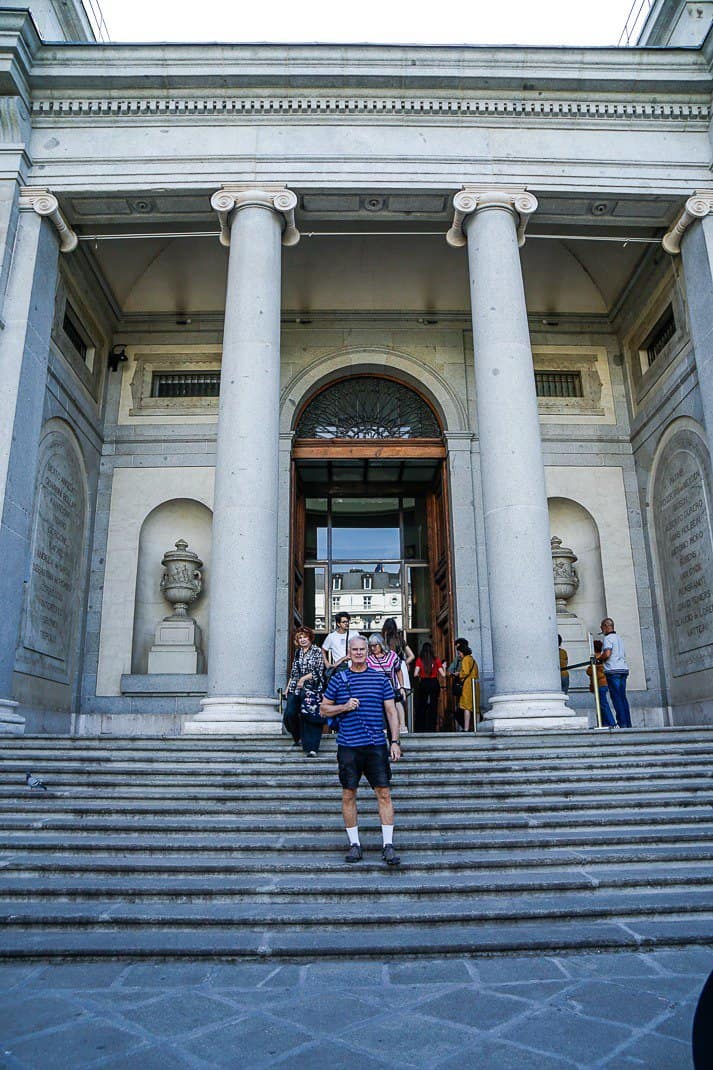
Prado
One reason I chose the Madrid Nacional as our hotel was its address: Paseo del Prado, also known as the Golden Mile. I don’t know of a street in the world with three better museums: the Prado, home of the world’s richest collection of Spanish paintings; Museo Thyssen-Bornemisza, one of the most famous private collections of European art in the world; and Centro de Arte Reina Sofia, home to Guernica, one of Pablo Picasso’s most famous paintings.
I wanted to be blown away again. I wanted to feel like that 22-year-old backpacker who thought art was black-light posters until I tramped around Europe that year in ‘78. So we went to the Prado where my online reservation allowed us to skip the line that looked 200 deep. I’ve only seen a longer line outside the Vatican Museums.
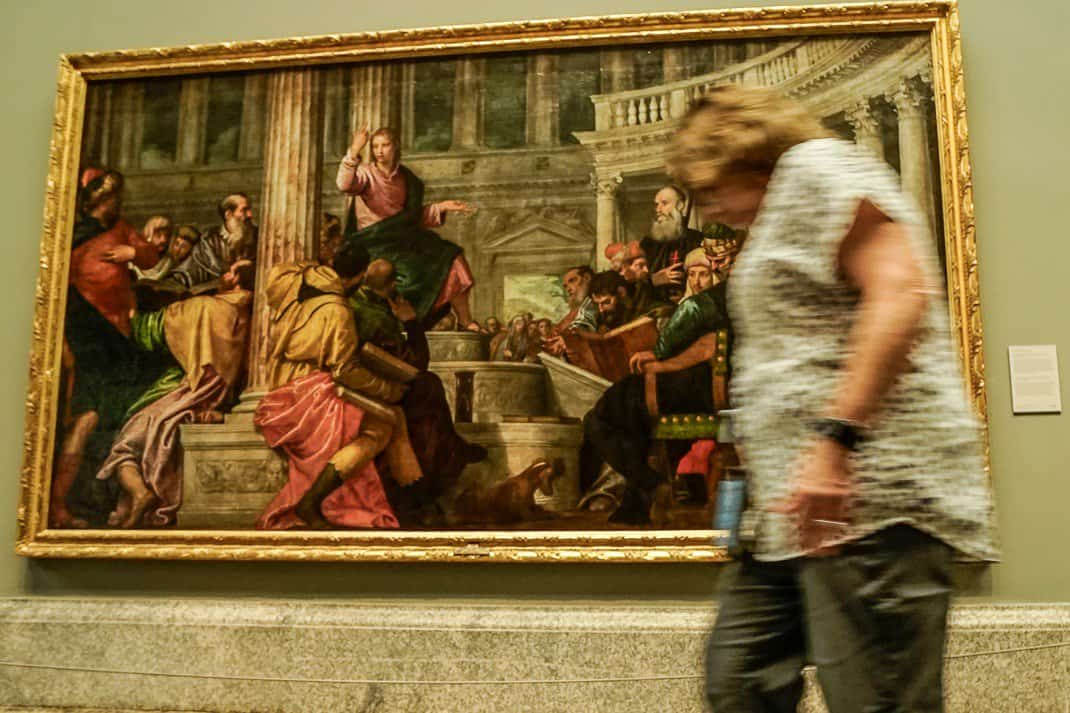
The Prado is on the fringes of the Mount Rushmore of world museums just behind the Louvre, the Vatican, the Met and the Hermitage. My favorite is Rome’s Borghese Museum. It has all of Italy’s greatest artists and is compact enough to get in and out in two hours. In fact, that’s all the time they allow their blocks of visitors.
The Prado is massive. Like the Louvre, it’s almost its own city. Completed in 1819 on orders of King Charles III, who originally wanted the National History Cabinet, the Prado has more than 100 rooms. It has all the great Spanish artists: El Greco, Valesquez, Goya.
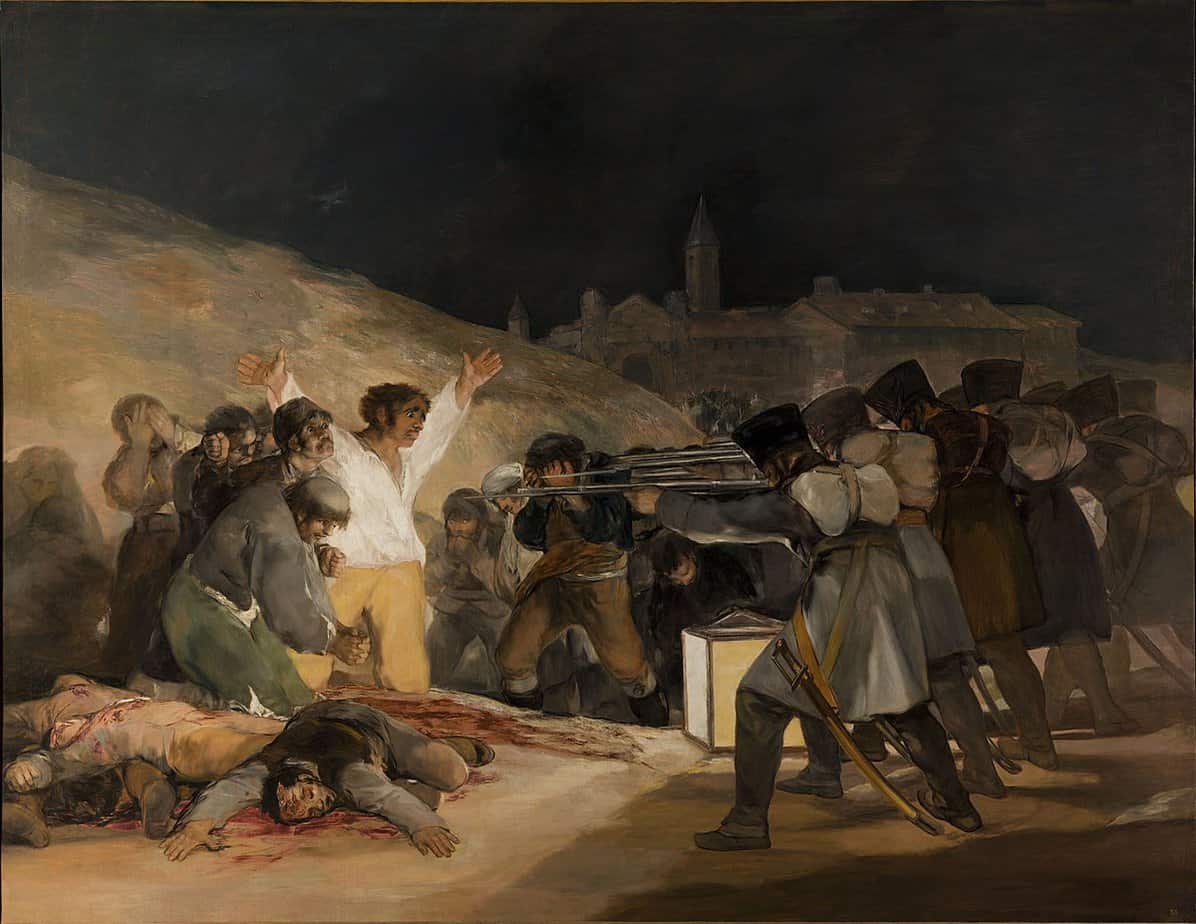
If you like drama, the Prado is the museum for you. A major theme is war in which Goya displayed with his Third of May 1808 showing French soldiers massacring Spanish civilians. Goya helped inspire the term “Black Paintings,” concentrating on dark subjects such as violence, war, despair and evil.
It also helps to explain that Goya was bat-shit crazy.
Black Paintings were a refreshing theme. Sometimes I get tired of the religious art I see all over Italy. At the Prado, the art is much more political.
Jose Moreno Carbonero’s The Conversion of the Duke of Gandia shows the rotting corpse of Empress Isabel of Portugal, wife of Carlos V. In Paul Rubens’ Death of Seneca, the Roman philosopher lays in a bathtub with his head hanging off the back after Emperor Nero ordered him to commit suicide for treason.
Goya’s Saturn Devouring One of His Sons shows a wild-eyed Saturn, the Roman God of Agriculture, chewing on the arm of a headless corpse, blood pouring down the young boy’s body.
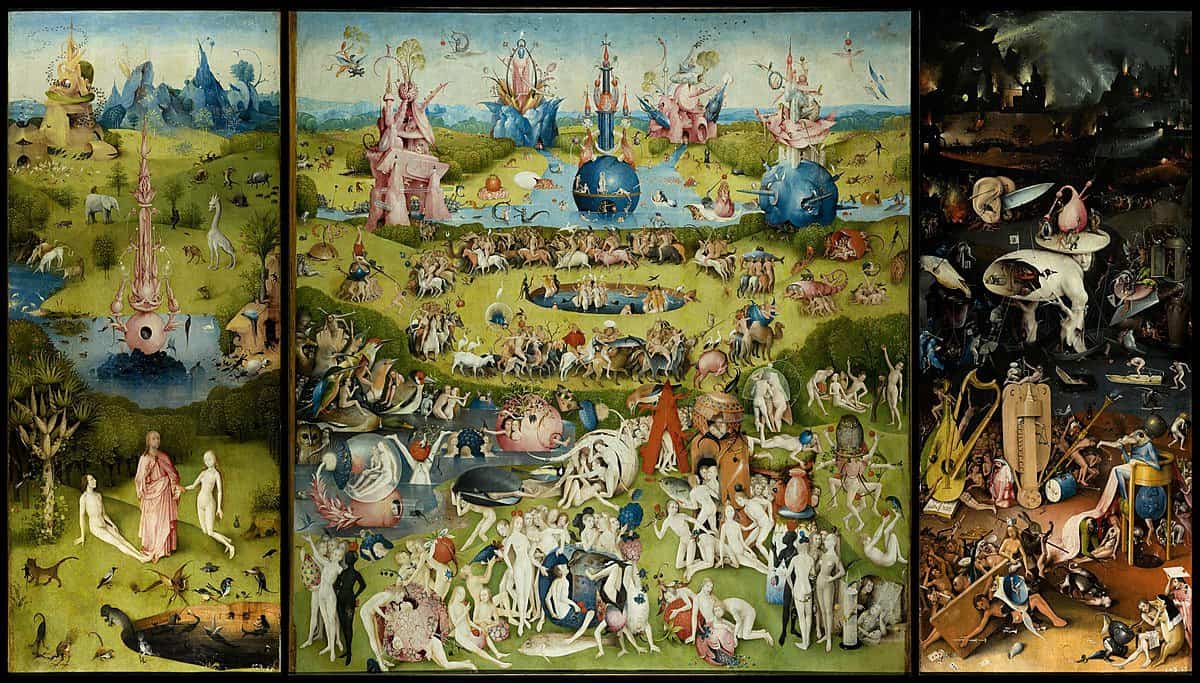
But the star of Prado is the Garden of Earthly Delights. The Dutch painter Hieronymous Bosch painted it between 1490-1500 and it became an “icon of Western culture.” It’s three huge panels illustrating in brilliant detail the opposites of good and evil. The left panel shows the Garden of Eden with a pretty pink tower and Adam and Eve looking absolutely spent in obvious post-coital bliss.
The middle panel shows ecstasy in the form of a giant orgy with naked bodies writhing everywhere. (Is that fellatio I see?) The right panel shows the evils of excess. Swords impaling bodies. City in rubble. A giant rat with a leg sticking out of its mouth.
A woman nearby me said, “I could stare at this for hours.”
Marina and I lasted a little more than two. We walked out into brilliant sunshine and 82 degrees. Our intention was to walk through Parque del Buen Retiro, one of the prettiest parks in Europe. We never even made it to the lake where you rent rowboats for a romantic cruise. We collapsed under a palm tree near other lovers sitting on blankets, eating sandwiches, sunbathing and reading.
I still prefer Rome. I can relate to its chaos. But Madrid’s calm beauty can seduce anyone for a long weekend.
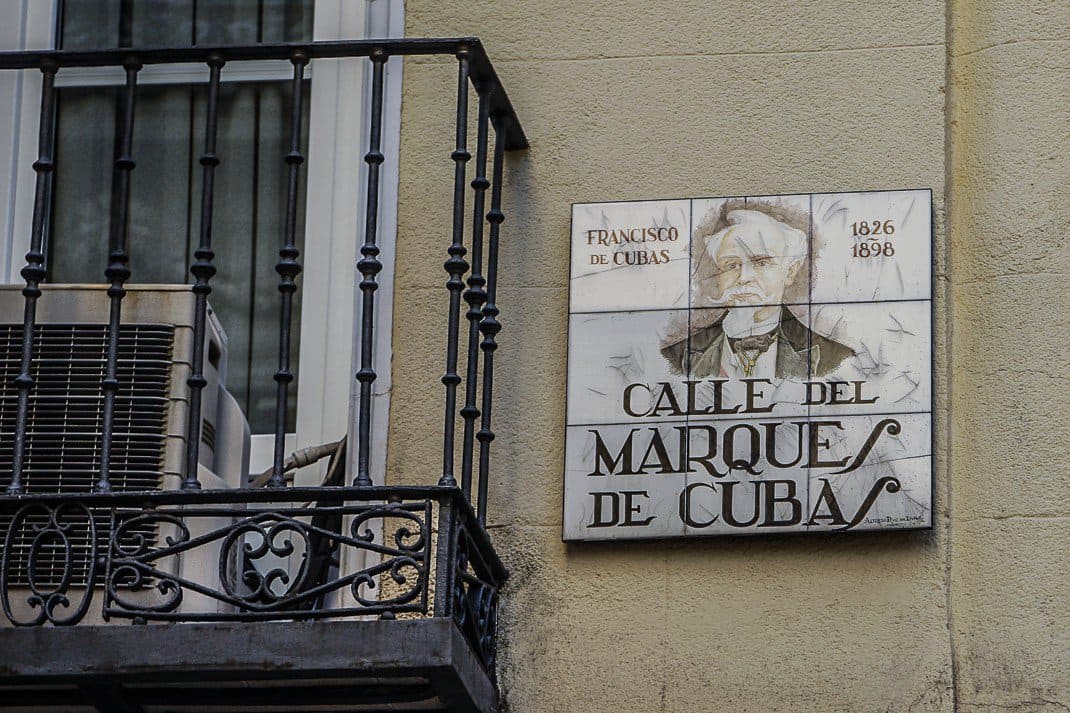
If you’re thinking of going …
How to get around: The Metro subway and buses are €1.50 a trip. Buy the pack of 10 for €12.50. The subway goes from the airport to the city center for €4.50 including a €3 airport supplemental fee. A taxi from the airport to the city center is fixed-rate €30.
Where to stay: Hotel NH Madrid Nacional, Paseo del Prado 48, 34-91-429-6629, https://www.nh-hotels.com/en/hotel/nh-madrid-nacional?utm_campaign=local-gmb&utm_medium=organic_search&utm_source=google_gmb. Four-star hotel part of the Europe’s NH chain has excellent, helpful staff and in a perfect location near the museums and parks. I paid €640.95 for three nights, not including breakfast.
Where to eat: El Rincon di Esteban, Calle de Sta. Catalina 3, 34-914-29-2034, rin.de.esteban@gmail.com, 1 p.m-midnight. An old, local establishment catering to Madrilenos, it features traditional Spanish fare such as migras (a bread and pork mix), oysters and fried eggplant with sesame and honey.
Mercato de San Miguel, Plaza de San Miguel, 34-915-42-4936, https://mercadodesanmiguel.es/, info@mercadodesanmiguel.es, 10 a.m.-midnight Sunday-Thursday, 10 a.m.-1 a.m. Friday-Saturday. More than 30 booths selling nearly every tapa from all over Spain. Range is €1.50-€4.50. It’s very touristy but the food makes it worth it.
When to go: Madrid broils in summer. Average highs in July approach 90. January it drops to 50 with lows in high 30s. In October, we had days in mid-80s with lows in 60s.
For more information: Centro de Turismo de Madrid, Plaza Mayor, 34-91-578-7810, www.esmadrid.com, 9:30 a.m.-9:30 p.m. In Real Casa de la Panaderia on north side of plaza. You can download Metro map to your mobile.


October 17, 2023 @ 3:56 pm
Great piece John!!! I love Madrid…ran the marathon there a few years ago and got to see the city that way. Food and transportation definitely top notch! Love the people too. Appreciated reading this thank you
October 17, 2023 @ 6:06 pm
Thanks, Mike. Hope you didn’t run the marathon in July. I hear Madrid is steaming. Only problem with Madrid is it’s hard as hell to find hotels under €200. I said, Screw it! and just paid big bucks for the location. Places on outskirts were about the same price.
October 17, 2023 @ 6:16 pm
You know the price of hotels there is Biden’s fault! He caused global inflation
October 17, 2023 @ 8:20 pm
Well, I think Covid had something to do with that.
October 18, 2023 @ 5:07 am
Sorry John! Sometimes sarcasm just doesn’t make it through! I was kidding.
October 20, 2023 @ 6:12 pm
Oh, OK. I understand now.
October 26, 2023 @ 10:36 am
As always, I enjoyed reading your articles even though Starbucks may not be too thrilled. Now I have a craving for tapas.
October 30, 2023 @ 7:30 pm
Screw Starbucks. They’ve ruined more neighborhoods than Covid.